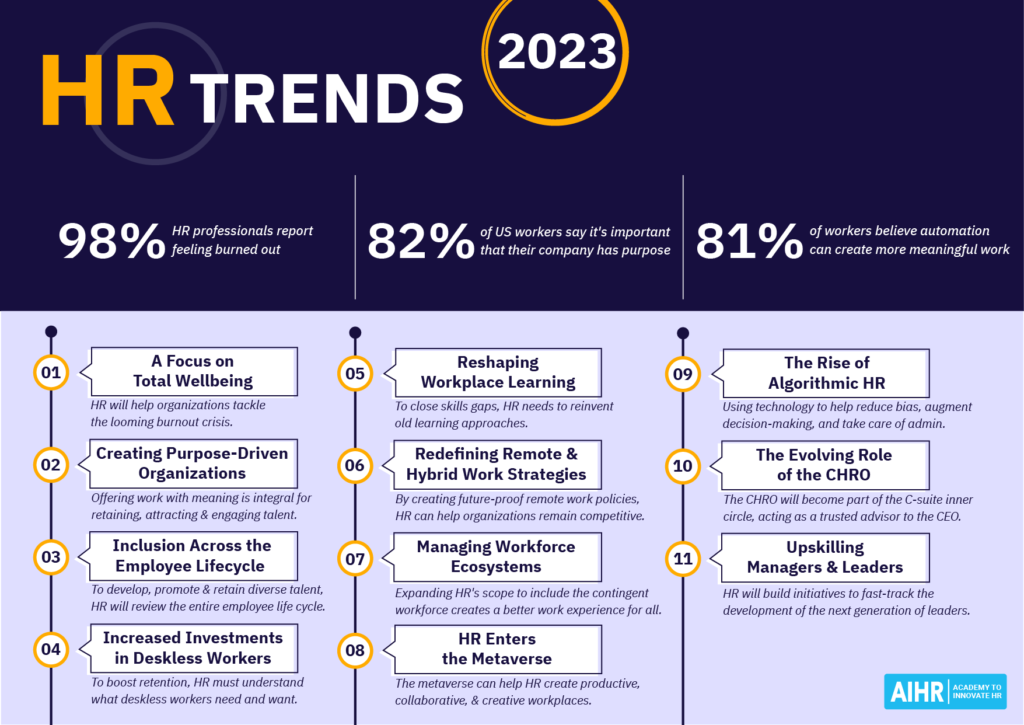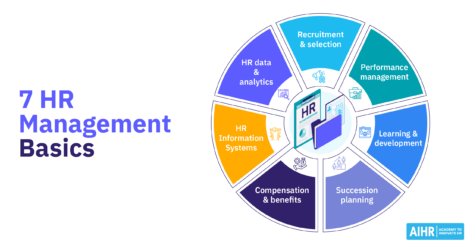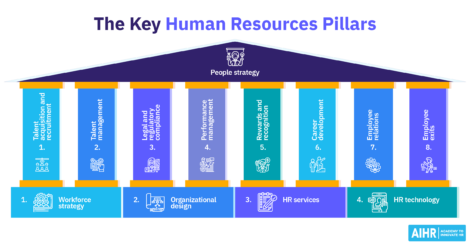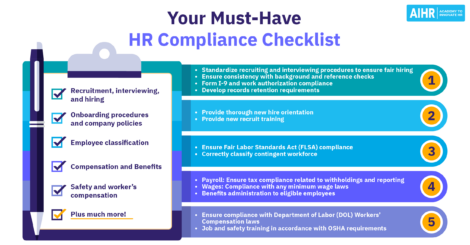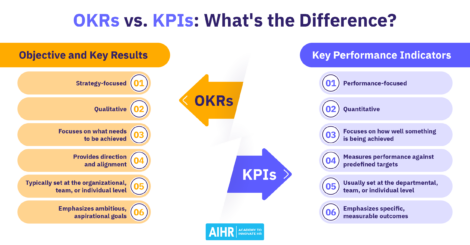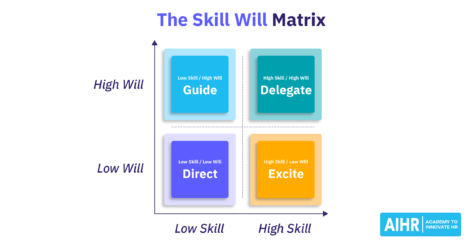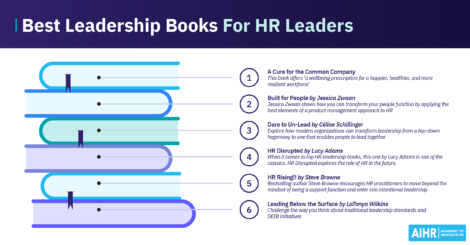11 HR Trends for 2023: Seizing the Window of Opportunity
2023 is bringing a changed world of work. The pandemic has propelled digital transformation four years into the future, and the employee-employer relationship has transformed. Although HR has been leading change and crisis in the past years, it runs the risk of missing the boat on this fundamental shift in how we work.
We believe that 2023 is HR’s window of opportunity to reposition the function’s value proposition in the post-pandemic reality. Human Resources professionals have played a significant role in guiding organizations through the storm of the pandemic and subsequent inflation surge and economic slowdown. In other words, HR can make a tremendous impact on organizations if adequately enabled.
We’ve identified 11 HR trends we expect will be shaping 2023 in the workplace. Some trends have been ongoing for a while now, but recent developments have accelerated them. Many are the result of drastic changes that organizations have had to make and, in some cases, are still facing.
Let’s dive in!
Contents
- A focus on total wellbeing
- Managing workforce ecosystems
- Redefining remote and hybrid work strategies
- The evolving role of the CHRO
- HR enters the metaverse
- Creating purpose-driven organizations
- Inclusion across the employee life cycle
- Upskilling leaders and managers
- Increased investments in deskless workers
- The rise of algorithmic HR
- Reshaping workplace learning

1. A focus on total wellbeing
There’s a silent crisis happening in organizations. According to the American Psychological Association (APA), nearly 3 in 5 employees reported negative impacts of work-related stress in the wake of the pandemic. 87% of Americans feel anxious about inflation, and 7 in 10 employees are worried that their compensation hasn’t kept up with the changes in purchasing power.
HR has arguably been impacted too. The function played a leading role during the pandemic, which has taken its toll. Research by Workvivo reported that a staggering 98% of HR professionals report feeling burned out at some point in the past six months.
Our first HR trend for 2023 is that organizations will take more responsibility for this looming burnout crisis among employees across the business. First, because it is the right thing to do, and second, because it poses a threat to the continuity of the organization.
The first step will be for HR to overcome its own burnout crisis. Although this may go against the nature of Human Resources, which must focus on helping others, HR professionals should put on their own oxygen masks first. Otherwise, the department will not be able to help the rest of the organization.
Next, we expect HR to move towards a more proactive approach to wellbeing and resilience. This involves developing a more holistic employee wellbeing approach focusing on mental, physical, and financial wellbeing.
All in all, in 2023, HR will focus on different aspects of wellbeing, starting with its own.
2. Managing workforce ecosystems
While HR has traditionally focused on permanent employees, other types of workers, like contractors, gig workers, and employees working for supply chain partners, play an increasingly important role in the company’s service delivery.
In the United States alone, 16% of Americans have earned money through gig platforms. According to ADP, in about 40% of companies, one in four workers is a gig worker. This means that a big part of the total workforce goes unmanaged, and HR is missing out on an opportunity to make an impact.
We believe that 2023 is the year where HR will begin to manage the complex workforce ecosystem beyond permanent employees. This has three implications.
First, HR will become actively involved in managing its contingent workforce. They will integrate contractors, gig workers, and external contributors into the HR value chain. This is not only a must-do from a value creation perspective but also from a risk viewpoint. HR’s current, often hands-off, attitude towards temporary staff creates a two-tiered workforce that even leading companies like Google struggle to adequately manage.
Second, in today’s platform economy, HR can contribute to creating a more blended workforce ecosystem by adding value to external contributors.
Uber is the largest taxi company without drivers, Airbnb is the largest hotel chain without properties, while platforms like YouTube, Netflix, and TikTok outsource most of their content creation. These companies are highly dependent on their contributors. There is a role for HR to play in making these contributors part of their people practices.
And third, HR should share best practices with supply chain partners, vendors, and service providers.
The (post-)pandemic era has shown the importance of value chains from a production perspective and a reputational standpoint. For instance, Rihanna’s fashion label Fenty Beauty was accused of using child labor in its supply chain.
HR may not drive partnering decisions, but it has a unique opportunity to strengthen best people practices throughout the supply chain.
Example initiatives we expect to see more of in 2023 include the creation of communities of expertise, mentoring programs for seasoned HR professionals, and job rotation across the supply chain. Business is not a zero-sum game, especially not when it comes to partners. This is an area in which HR can create tremendous value through workforce ecosystems.
3. Redefining remote and hybrid work strategies
Work has changed in the course of the pandemic. According to McKinsey, the pandemic has sped up digital transformation in organizations by three to four years. And workers have adapted accordingly. For instance, LinkedIn data shows that remote jobs, which make up around 20% of all jobs on LinkedIn, received over 50% of all job applications!
This illustrates that resistance to some degree of flexible working will put businesses at a competitive disadvantage. Not all organizations have realized this, and they continue to hold onto outdated strategies that previously made sense. For instance, 95% of executives believe that employees need to be in the office to maintain company culture. Also, a Nature Human Behaviour study found that the collaboration of Microsoft employees dropped by 25% and became more siloed in a remote setting compared to pre-pandemic levels.
Despite this, 64% of employees would consider quitting if they were expected to return to the office full-time. Hybrid working has become a part of modern work culture, and we believe companies like Goldman Sachs and leaders like Elon Musk are fighting a losing battle.
Employees want clear communication and modernized policies. We expect that in 2023, HR practitioners will set clear principles about how, where, and when work is done. They will facilitate internal conversations on this topic and push their organization to make decisions, even if they are temporary, as organizations explore different workplace strategies.
HR professionals will also educate themselves and managers on overcoming proximity bias, which is an unconscious tendency to favor employees you often see in the office over remote workers. They’ll work on establishing objective performance metrics, promotion, and salary increase criteria.
Next, HR will reinvent the role of the office. Clear working policies will impact office planning and utilization. This will lead to better-designed workspaces, flexible spaces to combat potential loneliness at home, and workspace allowances to upgrade home facilities.
Last but not least, HR itself will become more hybrid and explore remote work. There is a leading role for HR to play when it comes to enabling better outcomes with remote working, and we expect to see much more of this occurring in 2023.
4. The evolving role of the CHRO
Today’s CHROs are wearing many different hats.
During times of crisis, like the COVID-19 pandemic, the initial days of the war in Ukraine, and rising inflation, the board looked to the CHRO to lead and respond. As a result, HR has been in the spotlight since early 2020. In most organizations, the CHRO has led discussions in board meetings when it comes to policies, business continuity, and employee safety and productivity.
What’s more, the CHRO is responsible for spearheading environmental, social, and corporate governance (ESG) goals. Increasingly ambitious ESG goals and investor appetite toward companies with this focus place the CHRO in a position to take ownership of this topic.
This is compounded by the CEO’s evolving role. According to the 2022 Edelman Trust Barometer, employees have more faith in their CEO than in government leaders, journalists, or any other CEOs. Also, 60% of employees expect their CEO to speak out on social and political issues they care about. This changing role of the CEO leaves room for the CHRO to understand employee sentiment and counsel the CEO on when to speak up and what to say.
With these factors combined, we expect that 2023 will be the year in which the CHRO solidifies its position as an irreplaceable part of the board and a key advisor to the CEO.
5. HR enters the metaverse
Gartner predicts that by 2026, 25% of people will spend at least one hour per day in the metaverse. This means that the leading organizations in this space will use 2023 as the starting point for some of these activities, including virtual events, employee onboarding, career fairs, and meetings.
There’s also potential to use the metaverse for workplace learning and training. Meta is investing $150 million in creating an immersive learning ecosystem that will make learning more accessible through the metaverse.
The few organizations that have started to leverage the potential of the metaverse will have a more modern employer brand, more engaging interactions with remote candidates, and can even drive productivity for the organization.
We believe that in 2023, a select group of organizations will set themselves apart by investing in the metaverse. These will be not only large enterprises with custom-designed metaverse environments but also innovative small businesses utilizing virtual workspace software.
HR plays a crucial role in helping the organization figure out how to use the technology best. They will need to develop new hybrid working policies to ensure healthy metaverse working practices and teach leaders how to lead in this new environment. The golden rule should always be: Don’t do anything in the digital world that you wouldn’t do in a physical workplace.
It also provides HR with a unique opportunity to redesign the (virtual) workspace beyond the traditional, often uninspiring office environment. The layout of a space influences how people use it. A round table invites discussion, while a rectangular table tends to be more hierarchical, with the boss seated at the head of the table.
The metaverse opens up the possibility of reimagining a productive, collaborative, and creative work environment unconstrained by physical norms. The lack of physical norms also creates additional opportunities for disability inclusion.
Despite the hype, we want to stress that the metaverse is a means to an end. It should drive business performance and employee experience and shouldn’t distract from the core business.
6. Creating purpose-driven organizations
2023 is also the year in which HR will focus on creating purpose-driven organizations.
One of the fundamental shifts we’ve seen in the past couple of years is the importance of purpose in today’s organizations. This is the result of 4 driving forces:
- COVID. Almost two-thirds of US workers admit the pandemic has dramatically shifted their priorities. 82% indicate that it is important for a company to have a purpose.
- Automation. Mundane and repetitive tasks are the first to be automated, with this in mind, 81% of workers believe that automation will lead to more meaningful work.
- Demographic changes. Both Millennials and Gen Z’ers prioritize values and purpose more than their older counterparts, while a retired population may decide to work longer if the work matters to them.
- Changing psychological contract. The anti-work movement in the US, quiet quitting, and the lying flat movement in China show changed work expectations.
These forces show that meaning is becoming a key differentiator for organizations to help to retain and attract talent. A clear purpose will also help engage existing talent, increase productivity, and fill the $8.5 trillion gap that the talent shortage is expected to cost in 2030.
In 2023, we expect HR to help shape the company’s purpose. Connecting the company’s purpose to environmental, social, and corporate goals and making these goals a clear part of the (employer) brand is a valuable way for HR to make an impact on the world and attract better talent.
The key here is authenticity. For example, Unilever received criticism for giving its Hellmann’s Mayonnaise the purpose of “fighting against food waste”, using the hashtag #maketastenotwaste, with critics finding it ludicrous for a company to define a purpose for this type of product.
When done well, HR will be able to engage both younger and more experienced workers by offering a purpose-driven workplace, making this one of the key HR trends for 2023.
7. Inclusion across the employee life cycle
Diversity, equity, inclusion, and belonging (DEIB) have been receiving more visibility. All Fortune 100 companies have their DEI initiatives outlined on their websites, and 49% of them have a dedicated DEI initiatives leader. Despite the increased visibility and attention paid to DEIB, organizational leadership is still too often White and male.
We expect that one of the pivotal HR trends of 2023 will be HR stepping up its game in building more inclusive HR practices.
At the moment, diversity initiatives primarily focus on recruiting. However, HR organizations are increasingly analyzing their entire employee life cycle through a DEIB lens. What initiatives can we implement to promote DEIB in all stages of the employee life cycle? There are plenty of opportunities when it comes to onboarding, development, promotion, and other people practices to create more inclusive workplaces where people feel like they belong.
DEIB also offers an opportunity to connect the organization’s purpose with diversity initiatives. This makes business sense – but is also the right thing to do.
We also increasingly see a focus on training HR staff to create HR practices from a diversity perspective.
Despite growing interest in diversity, research shows that employees are at least 60% more likely to disclose a disability to their direct supervisor than to Human Resources. A White male with a disability earns 90.7 cents for every $1 earned by a White, able-bodied male. Creating a safe environment for employees to disclose their disabilities is a good first step toward building trust and implementing policies that help those with disabilities.
Other examples of initiatives we expect to see a lot more of in 2023 include:
- Addressing racial disparities in healthcare and the role of employers.
- Implementing relevant long-term diversity programs to increase representation among managers.
- Tying executive compensation to DEI metrics.
Consulting firm Mercer estimates that around 15-20% of S&P 500 companies make DEI metrics part of their executive compensation. Only about 5-10% of those companies set objective, quantitative DEI metrics. We anticipate that HR will play an active role in identifying and tracking the relevant DEI metrics.
8. Upskilling leaders and managers
During the Great Resignation, many high performers were promoted to managerial positions in an attempt to retain them. At the same time, several organizations have been willing to take a shot at hiring less experienced candidates for managerial positions due to the talent shortage.
This means that today’s leadership pipeline is filled with new candidates that have little to no managerial experience. Developing the next generation of leaders is a top challenge for 55% of CEOs. And for a good reason. Organizations providing high-quality development experiences are 1.5 times more likely to have high leader engagement and retention rates. Additionally, they are twice as likely to be voted as the best places to work. However, only 11% of companies have a strong leadership bench.
There are also other challenges to navigate, like leading remote teams, managing hybrid work, and changing expectations of leaders who must now personify the company purpose, lead with a human-centric approach, and work together with additional stakeholders in and outside the organization.
This is where HR plays a pivotal role. One of the major trends in Human Resources we see for 2023 is HR’s investment in upskilling leaders. HR practitioners will clearly identify and communicate leadership expectations. What does the organization expect from leaders? How does this translate into practical behaviors? And how do we help leaders become self-aware of the impact that their behaviors have on those around them?
Besides clear communication about expectations, HR will play a role in listening to the employee voice, which is becoming increasingly important for organizations with hybrid and remote working policies. HR can help leaders understand the mood in the organization and navigate any relevant issues.
HR will also help build soft skills, including empathy and active listening amongst its leadership population, as employees look to their leaders as a trusted source of information.
To build these skills, HR will invest in leadership development plans and programs, training, mentorship, on-the-job immersive experiences, and talent rotation strategies to fast-track exposure, experience, and skill development.
Upskilling leaders and managers is key for HR to create value in the organization as well as help retain employees. That is going to be critical in 2023.
9. Increased investments in deskless workers
The pandemic has highlighted the importance of deskless workers who were on the front lines fighting the pandemic as nurses, in supermarkets, or processing food on an assembly line.
At the same time, the pandemic emphasized the difference between what was traditionally office work (working comfortably from home) and deskless work (showing up every day). Oliver Wyman Forum says that about 1 in twelve deskless workers have already made the switch to a different type of work. Another 37% could leave within the next six months, according to BCG.
This is not necessarily bad for those who remain. They may press for better salaries in a demand-driven market. However, it sends a wake-up call for organizations that are already struggling to retain and attract talent.
There’s good news as well. The vast majority of deskless workers (97%) report that they would stay in their current roles if their conditions improved. Such conditions go beyond a pay rise, meaning that HR needs to offer deskless workers the same opportunities as their deskbound counterparts.
Subsequently, our 9th HR trend for 2023 is that HR will drastically increase investment in its deskless workers. This includes:
- implementing mobile-first self-service enterprise software,
- career opportunities and promotions,
- better compensation,
- and improved working conditions like flexibility and work-life balance.
In the end, whether you’re a deskless worker or a desk-bound employee, you just want to have a good time at work. That doesn’t mean that work should be easy – but at the very least, companies should be doing their best to improve working conditions. Creating a great place to work for deskless workers will be HR’s major focus in 2023.
10. The rise of algorithmic HR
Our next HR trend is happening right in front of our eyes – but only a few have noticed it. In 2023, the majority of organizations will start managing employees… with robots.
According to the research firm IDC, 80% of global 2,000 companies will use algorithmic managers for hiring, firing, and training workers by 2024. This is already taking place in the gig economy. Also, 40% of the HR functions within international companies have incorporated AI applications, which help grow the candidate pool, enable faster hiring, and improve engagement and retention.
This brings additional challenges related to fairness, communication, and inclusion. For example, there have been cases of algorithmic managers randomly choosing which contractors would lose their jobs and terminating people for reasons beyond their control.
HR will need to take ownership of algorithmic management, ensuring a fair, transparent, and efficient process. There’s a great opportunity that HR can leverage: Creating systemic equity in both the literal and figurative sense of the word. This means preventing existing biases that are embedded in historical HR data from becoming part of the algorithm.
Algorithmic managers will be able to process large quantities of data, communicate clearly, and help both HR and managers make better-informed decisions. Moreover, they could add a level of transparency and procedural justice that is much harder for humans to provide.
These algorithms will be able to complement the manager and act like a sounding board. They will have access to much more information than managers do at the moment, providing input for complex decisions.
HR practitioners will be instrumental in ensuring that HR technology complements diversity and inclusion in the future.
11. Reshaping workplace learning
2023 is also the year in which HR will reinvent employee development strategies and bring learning into day-to-day work.
Amid the Great Resignation and the Great Reshuffle, lack of career development and advancement is the top reason for quitting a job, according to a McKinsey report. And while 87% of organizations know they have a skills gap or will have one within the next few years, only 40% of employees say their company is upskilling.
Closing the skill gap is one of the critical ways for HR to make a difference in their organization. However, doing this well requires initiative and reinvention of old learning approaches.
In 2023, we will see a focus on more strategic learning – the training of skills aligned with the capabilities the organization needs to be competitive. This can include hard skills, which are more technical, and soft skills, like communication, time management, and analytical and critical thinking skills.
Implementing learning these within the flow of work requires a reinvention of traditional training methods. We will see more microlearning, micro-mentoring, performance coaching, and learning in the flow of work.
As part of this trend, we predict that HR will invest in more personalized workplace learning that is linked to what people are interested in learning and the ways they prefer to learn. That way, HR can ensure that employees are learning what’s relevant to them in an engaging manner. To do this, HR will have to refresh many old learning habits and replace these with more contemporary techniques.
A final word
We see 2023 as a year of immense opportunity for HR. However, there are a number of challenges to overcome.
First, HR needs to prioritize their own wellbeing and continue building resilience. That will place HR professionals in a better position to boost the wellbeing of their employees and help organizations become ready for future challenges.
Secondly, organizations need to adopt a broader perspective and understand that HR trends don’t concern only one department but the whole business. They must consider how HR can play a key role in managing organizational change. In other words, business leaders and HR needs to collaborate closely and acutely to successfully handle the changes in the world of work.
Third, businesses must accept that we are on the cusp of entering a new era: a human-first era that sees organizations not just as structures for maximizing profit and effectiveness but also as drivers of meaning for empowered, engaged, and diverse workforces.
It is time for HR to step up to the plate, capture the opportunities that 2023 brings, and reposition the function’s value proposition as a leader of the business and a builder of competitive people capabilities. That is the true power of HR: driving strategic impact through people.
You can read about 2022 HR trends here.
Weekly update
Stay up-to-date with the latest news, trends, and resources in HR
Learn more
Related articles
Are you ready for the future of HR?
Learn modern and relevant HR skills, online






